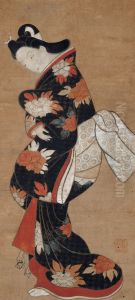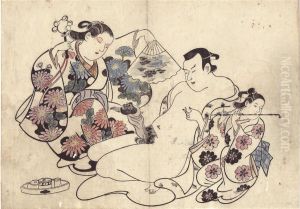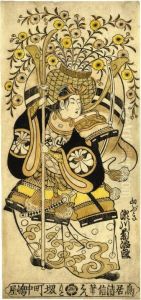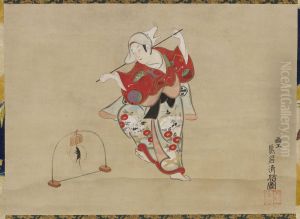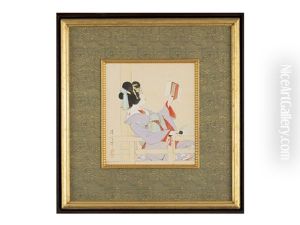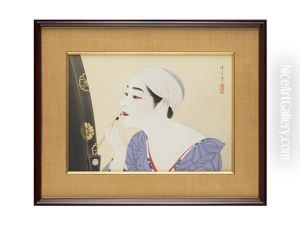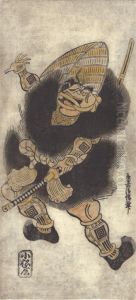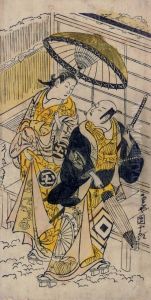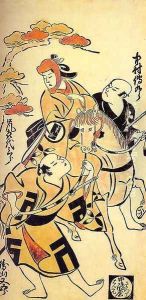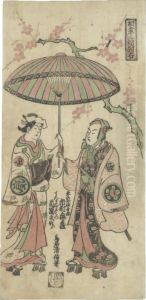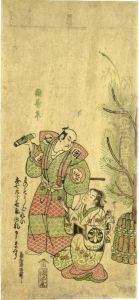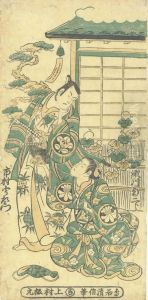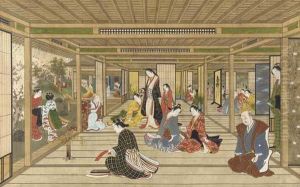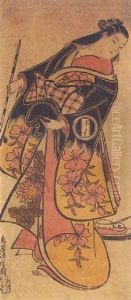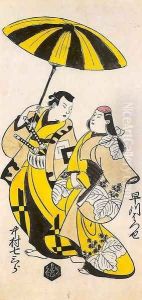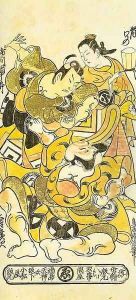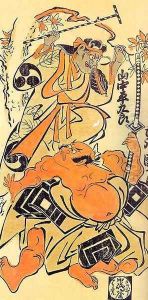Torii Kiyonobu Paintings
Torii Kiyonobu I was a prominent Japanese ukiyo-e artist and painter, born in 1664 in Edo (now Tokyo), Japan. He was the founder of the Torii school, which played a significant role in the development of the ukiyo-e genre, particularly in the realm of kabuki theater signboards and actor prints. Kiyonobu's father, Torii Kiyomoto, was a painter and banner maker, which influenced Kiyonobu's artistic path.
Initially, Kiyonobu worked as a banner and billboard painter for the kabuki theaters in Edo, a craft he likely learned from his father. His work was characterized by bold lines, vivid colors, and dynamic compositions that captured the drama and excitement of kabuki. He was adept at portraying the actors and their costumes, which made his prints popular among theatergoers who wanted a keepsake of their favorite performances.
By the early 18th century, Kiyonobu became instrumental in the development of the 'actor print' (yakusha-e), which depicted kabuki actors in their most famous roles. His prints were not mere portraits; they were imbued with the energy and emotion of the actors' performances. Kiyonobu's style was so influential that it became the defining aesthetic of the Torii school, which continued to produce kabuki-related artwork for several generations.
Kiyonobu's contributions also included hand-colored prints (tan-e) and the development of the brocade print (urushi-e), which used a special lacquer to give the appearance of a luxurious brocade fabric. His innovative techniques and strong sense of design not only set a standard for the Torii school but also contributed to the broader ukiyo-e movement.
Torii Kiyonobu I passed away in 1729, but his legacy lived on through the artists he trained and influenced. His work continues to be celebrated for its bold style and its pivotal role in the history of Japanese woodblock printing.
